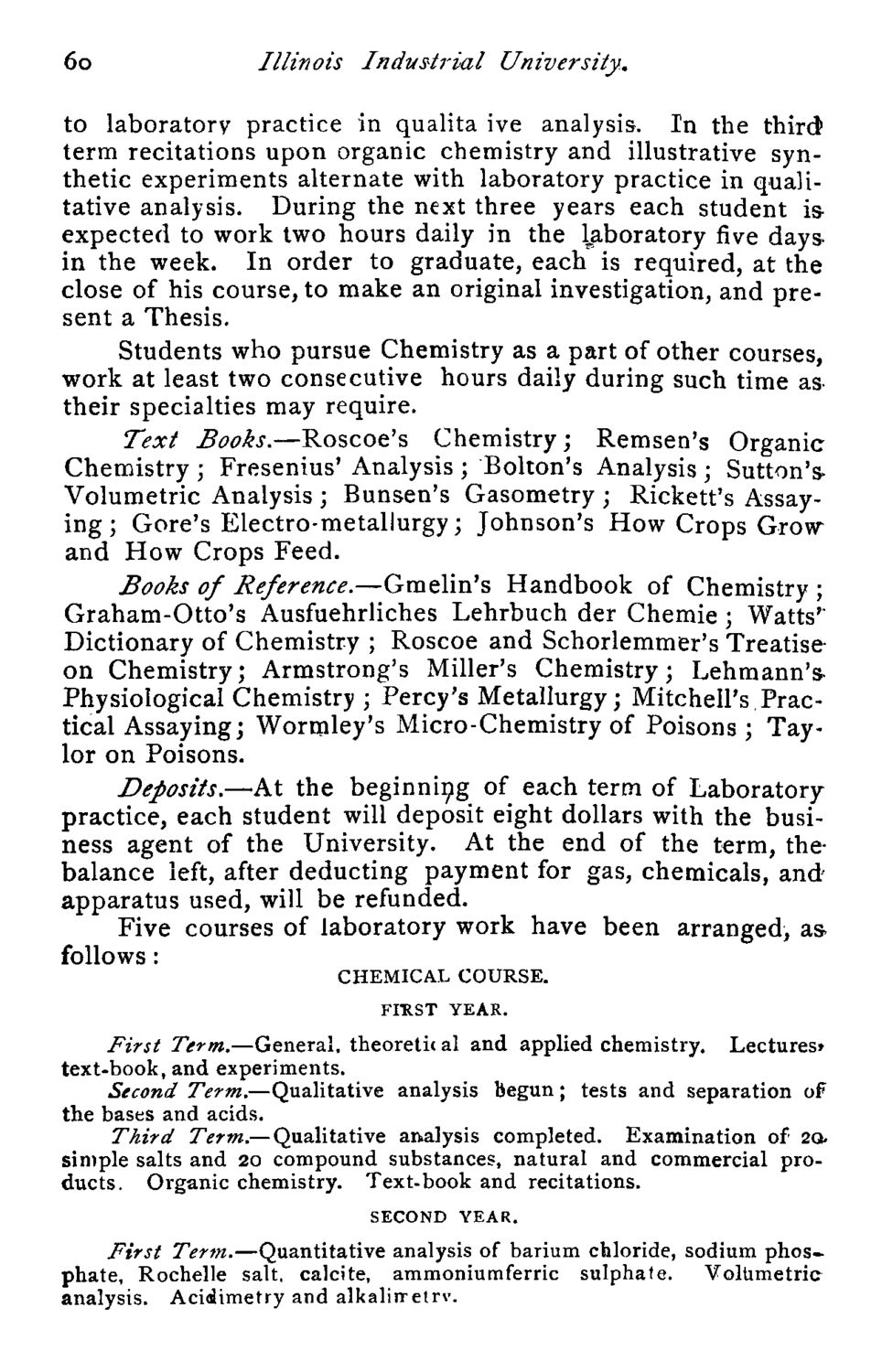| |
| |
Caption: Course Catalog - 1884-1885
This is a reduced-resolution page image for fast online browsing.

EXTRACTED TEXT FROM PAGE:
60 Illinois Industrial University,. to laboratory practice in qualita ive analysis. In the third term recitations upon organic chemistry and illustrative synthetic experiments alternate with laboratory practice in qualitative analysis. During the next three years each student isexpected to work two hours daily in the laboratory five daysin the week. In order to graduate, each is required, at the close of his course, to make an original investigation, and present a Thesis. Students who pursue Chemistry as a part of other courses, work at least two consecutive hours daily during such time astheir specialties may require. Text Books.—Roscoe's Chemistry; Remsen's Organic Chemistry ; Fresenius' Analysis ; Bolton's Analysis ; Sutton'sVolumetric Analysis ; Bunsen's Gasometry ; Rickett's Assaying ; Gore's Electro-metallurgy; Johnson's How Crops Grow and How Crops Feed. Books of Reference.—Gmelin's Handbook of Chemistry ; Graham-Otto's Ausfuehrliches Lehrbuch der Chemie; Watts'" Dictionary of Chemistry ; Roscoe and Schorlemmer's Treatiseon Chemistry; Armstrong's Miller's Chemistry; Lehmann'sPhysiological Chemistry ; Percy's Metallurgy; Mitchell's Practical Assaying; Wormley's Micro-Chemistry of Poisons ; Taylor on Poisons. Deposits.—At the beginning of each term of Laboratory practice, each student will deposit eight dollars with the business agent of the University. At the end of the term, thebalance left, after deducting payment for gas, chemicals, and apparatus used, will be refunded. Five courses of laboratory work have been arranged, as follows: CHEMICAL COURSE. FFRST YEAR. First Term.—General, theoretii al and applied chemistry. Lectures* text-book, and experiments. Second Term.—Qualitative analysis begun; tests and separation of the bases and acids. Third Term.— Qualitative analysis completed. Examination of 2Q. simple salts and 20 compound substances, natural and commercial products. Organic chemistry. Text-book and recitations. SECOND YEAR. First Term.—Quantitative analysis of barium chloride, sodium phosphate, Rochelle salt, calcite, ammoniumferric sulphate. Volumetric analysis. Acidimetry and alkaliiretrv.
| |